What Guyanese usually become preoccupied with whenever the country goes to the polls – apart from who will win the elections, of course – is whether or not the outcome will be attended by violence, race on race violence. It is race that, principally, is the dividing line that separates the country’s two major political parties and influences their elections-time decision-making.
They, the politicians that is, and perhaps many more of us than we might imagine, live in a state of denial. We have created various mechanisms to conceal the reality of race. One of those has been the creation of slogans that extol the virtues of common good – One People, One Nation, One Destiny, our national motto, speaks to the fact that it is our collective location in a single geographic space rather than where we came from that counts. Sometimes, however, particularly at election time, the true meaning of our Motto does not hold good.
Nor have we, the incontrovertible evidence of the problem notwithstanding ever done much more to address the problem than seek to wish it away; and if our political leaders have been loath to admit it, the problem of race persists for the reason that seen through their lenses it provides a means of ordering political loyalties, a mechanism for laying claim to unchanging political constituencies. Far more than policies and promises it is race the fuels voter behaviour. To suggest to the contrary is to indulge in evasive pipe-dreaming.
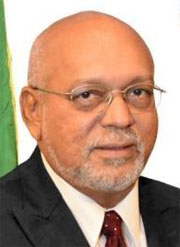
It is not, of course, that the nation is permanently at daggers’ drawn. To a greater extent, the interregnum between elections induces a measure of co-existence. Even today, however, there exists pockets of racial animosity that are strong as they ever were and it takes general elections to bring those to the fore.
The political pretence to the contrary manifests itself in various ways, the most obvious one being the parading by the political parties of their ‘high fliers’ of ‘the other race;’ it comes across as a kind of ethnic window-dressing that seeks to make a case for inclusiveness. These days it does not even constitute particularly creative image-making. Even the newly-elected President Donald Ramotar conceded in a pre-elections interview with The Guyana Review that his party’s electoral fortunes were likely to be influenced by a measure of race-based voting.
The more optimistic among us would like to think that the November 28 general elections might have moved the goalposts ever so slightly; that the one-seat majority which the two opposition parties hold in the National Assembly might have sent an ever so subtle signal that we are ready to slay the ghost of an unchanging pattern of race-driven voting. For now at least, sorry little though it amounts to, it is all that we have to hold on to, though, if the truth be told, one can cite other reasons for an electoral outcome which, for the first time in the country’s history, has given the political opposition a majority in the National Assembly. Some say that what appears to have been a measure of erosion of support for the ruling party might have had to do with the corrupt practices that manifested themselves under the administration of President Bharrat Jagdeo. Others attributed the altered parliamentary mathematics to the advent of the Alliance for Change (AFC), a political party that had its genesis in an initiative taken by two one-time leaders in the PPP and the PNC, one Indian, one African to challenge the race-driven conventions of the political culture. If the results of the elections suggest that the AFC intruded on the political space of the two major parties, last November, traditional voting patterns held to a large extent and that, in the final analysis is what returned the PPP/C to office.
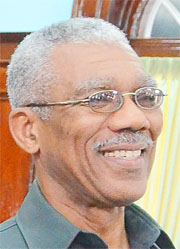
The earlier tinkering with the names of the country’s two major political parties was intended, more or less, to create an impression of change. There is the “Civic” component of the PPP symbolized these days, solely in the person of the country’s African Guyanese Prime Minister. Otherwise ‘Civic” is a political non-entity. The PNC’s rump was fashioned from a “reform” group that exerted some measure of influence on the late PNC and former President Desmond Hoyte. There used to be a time when there was greater evidence of a “Reform” component to the PNC than there ever was a “Civic” component. That, however, is no longer the case.
In November the PNC opted for another reinvention of self through a coalition with a few other little known political parties including the once politically boisterous but now jaded Working People’s Alliance. (WPA). The coalition, named A Partnership For National Unity (APNU) subsumed the name of the PNC beneath the title which it used to contest the elections, a decision that appeared did to go down well with all of the party’s traditional supporters. The coalition decision was, in effect, a concession by the PNC that it would take at least a semblance of national unity to unseat the PPP/C administration. If the truth be told the appearance of national unity was far less real than it sought to be. APNU’s showing at the polls reflected, overwhelmingly, the vote of the traditional PNC supporters. It was the first time too, that the PNC had gone to the polls with a presidential candidate other than its party leader.
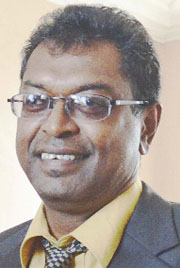
This time around, save and except the unacceptable delay in the delivery of the elections results and the injuries sustained by some post-elections peaceful protestors under a hail of rubber bullets from the police, the elections passed peacefully. Indeed, the subsequent feuding among the political parties over which of them would select a Speaker created for more controversy. The PPP/C, perhaps understandably, pushed for its own stalwart and Speaker in the earlier ninth Parliament, Attorney At Law Ralph Ramkarran, to be reinstated. Perhaps they might have been seeking to placate one of the Party’s best respected figures after he had lost out, seemingly in controversial circumstances, to General Secretary Donald Ramotar in the race for its presidential nomination. There are those too who contended that Mr. Ramkarran might have been considered for the serve as Attorney General.
If one might have thought that the combined parliamentary opposition would then simply have used its one-seat majority to get its way on the matter of the Speaker that was far from the case. Indeed, the public ruckus between the two opposition parties over which of them should pick the Speaker actually reached a point of such unseemliness that it might even have raised serious questions as to whether they can, together, serve as an effective opposition to the government.
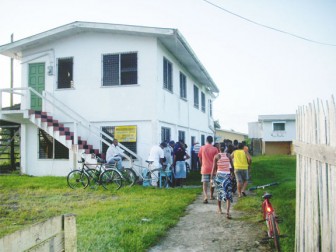
The issue of the Speaker may eventually have been settled in favor of the AFC’s co-leader Raphael Trotman but the ruling party is sufficiently sore to have made public its displeasure and, moreover, to drop a broad hint that an early general elections cannot be ruled out with a view to regaining the majority which it lost in November.
For a host of reasons President Bharrat Jagdeo had become an imposing political figure during his tenure in office. His successor had, during his own campaign, declared his intention to press the former President into service in his own government. How true that will eventually turn out to be remains to be seen, though the fact that the new Attorney General represents the only significant ministerial change from the old Jagdeo Cabinet may provide an indication as to President Ramotar’s intentions, at least in the short term. In the longer term, once Mr. Ramotar finds his own political feet – bearing in mind that that his political experience as a party operator far exceeds any real experience in government – he will probably seek to fashion a Cabinet ‘in his own image and likeness.’
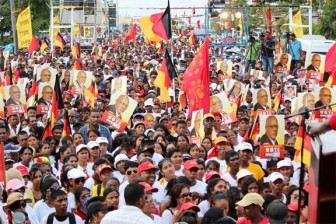
Not a great more can be said about the events of November 28 save and except, perhaps, that a pattern of normalcy appears to have settled over the country again. President Ramotar has set out no ‘grand plan’ for the running of the country. Perhaps he favors a much quieter approach to the presidency than his predecessor.
That apart, much of the political drama is expected to come from the National Assembly, a circumstance that will probably shift some public attention from the executive to the legislature. That may suit Mr. Ramotar’s seemingly more sedate style of leadership. Certainly, a Parliament that has the capacity to create a culture of meaningful debate on proposed legislation is a new and potentially exciting development. It might even create an enhanced level of national awareness of the critical role that the National Assembly can play in the affairs of a democratic nation. For the moment at least we will simply have to wait and see whether November 28 has done anything to alter our seemingly unchanging political landscape.





